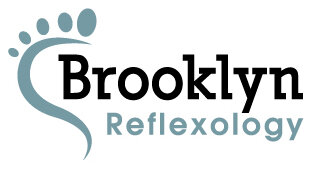What is Frozen Shoulder?
Frozen shoulder (FS) or adhesive capsulitis is a clinically diagnosed syndrome which affects the shoulder joint (glenohumeral joint), causing pain and a progressive loss of movement. Tissue changes and a low-grade inflammatory response can lead to a shrinking of the joint capsule, joint stiffness and immobility. The condition is self-limiting and in a majority of cases will resolve over a period of time.
Causes:
There are two primary forms of FS:
Primary FS: The most common type. This form of FS is idiopathic (of unknown origin) and is often caused by some unidentified stimulus.
Secondary FS: Often the result of some previous injury affecting the shoulder joint. Some common examples could include: direct trauma, fractures, surgery, arthritis, or infection. The disuse of the shoulder predisposes it to the pathological changes associated with the condition.
Incidence:
FS has been known to affect a certain demographic of the population:
It primarily occurs between 40-70 years of age
It usually affects the non-dominant arm
Women are affected more often than men at a 2:1 ratio
It’s most prevalent in insulin dependent diabetics
Pathological Changes:
1) With the disuse of the shoulder, the shoulder capsule shrinks; the synovial lining and surrounding tendons shorten and become inflamed.
2) Adhesions form in the capsule and in the surrounding rotator cuff muscles.
3) Eventually the humerus is drawn tightly into the thickened joint capsule and becomes attached to the bone.
4) The surrounding muscles become stiff and inelastic, preventing normal range of motion.
Signs & Symptoms:
The onset is usually gradual
Joint stiffness and immobility
Pain is dull, constant, and aching
Pain with movement of the shoulder (active or passive), most acute in midrange
Pain is usually worse at night, especially if sleeping on the affected side
Limited range of motion of the shoulder, especially external rotation. Activities such as brushing your teeth, combing your hair, or getting dressed become painful and difficult
Shoulder is usually held in a fixed position (internally rotated & adducted, w/ the elbow flexed)
Progression of the condition:
There are three stages to FS, each lasting approximately 6 months.
Freezing Stage: A painful, inflammatory stage characterized by constant shoulder pain and muscle spasms. During this stage the fibrosis of the joint is just forming. Limited ROM is mostly due to inflammation and spasms.
Frozen Stage: Pain is no longer constant at this stage. Resting pain begins to decrease and a dull ache is present during movement. There is however an increase in joint stiffness and a progressive loss of shoulder movement.
Thawing Stage: There is a gradual restoration of movement and a decrease in pain and discomfort during this stage. Functional activities return. ROM increases but some residual restrictions could remain.
Treatment:
During the freezing stage:
NSAIDS and analgesics are often used to manage the pain. In some cases, corticosteroids are used when pain is unmanageable
Pendulum exercises may be used to help traction the joint and aid in continued movement of the shoulder
Passive and active ROM exercises are used to help with the pain and prevention of adhesion formation
Massage around the joint capsule and rotator cuff muscles to help decrease muscle stiffness and pain
During the frozen & thawing stages:
Moist heat applications
Massage to hypertonic muscles and friction to adhesions in rotator cuff muscles
Gentle tractioning of the joint along with ice massage to rotator cuff tendons
Trigger point work and myofascial release to cervical, thoracic, and shoulder girdle muscles
Passive ROM along with gentle stretches
Due to the pathological changes in and around the joint capsule, it’s important to keep the shoulder muscles – especially the rotator cuff muscles – as flexible as possible. This includes doing passive and active ROM exercises, gentle stretches, ice & heat applications, and trigger point work to the surrounding muscles. Doing so can have a significant impact on pain management, mobility, and ultimately the expediency of the condition. Towards the end of the thawing stage, physical therapy along with isometrics and other muscle strengthening exercises may be helpful in restoring the shoulder to full capacity.
